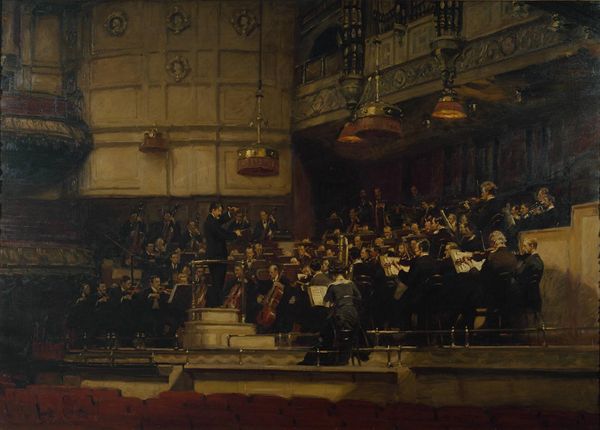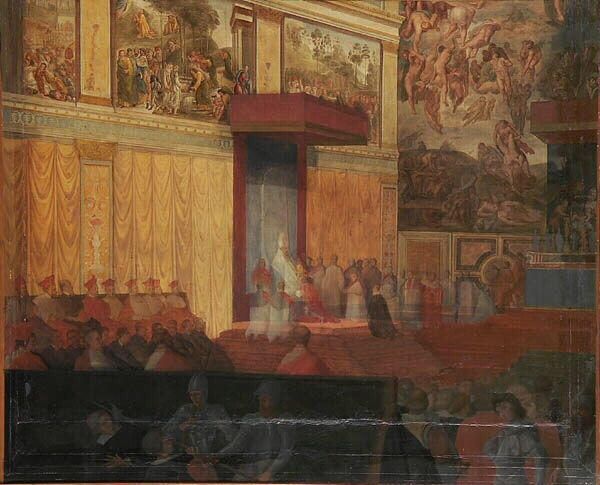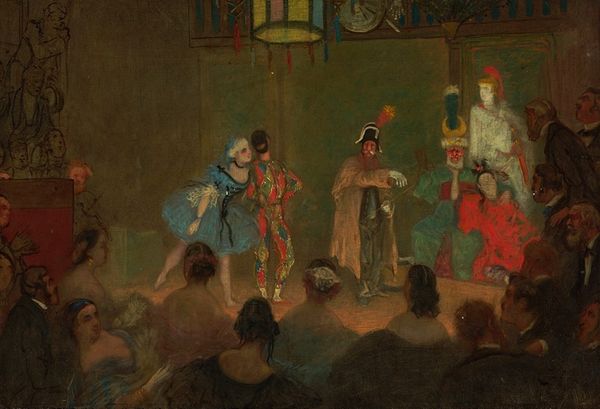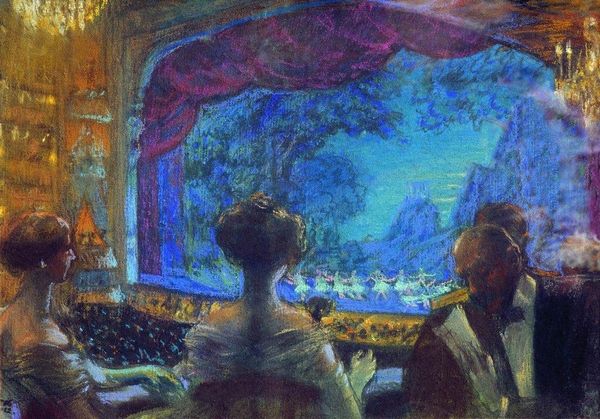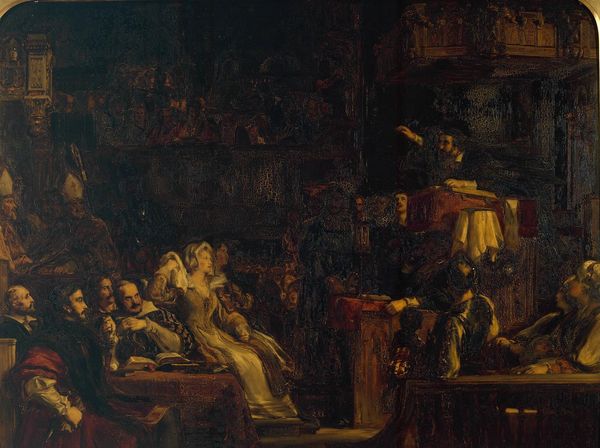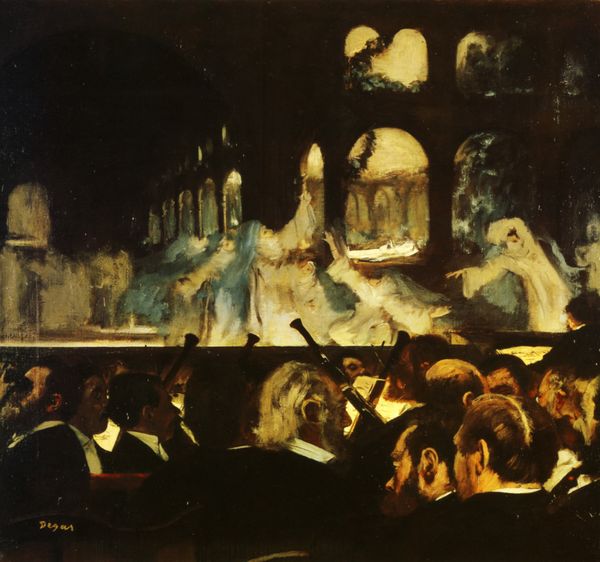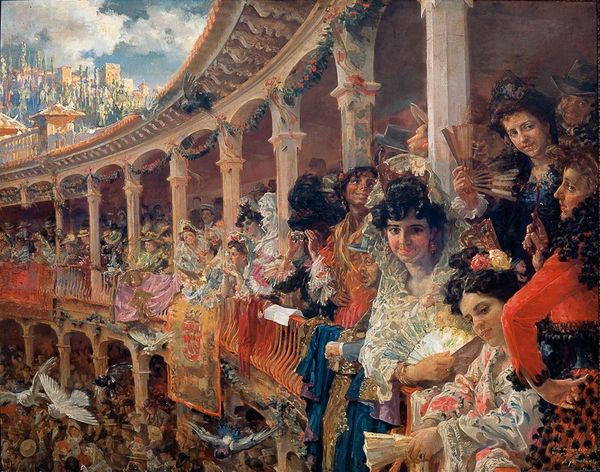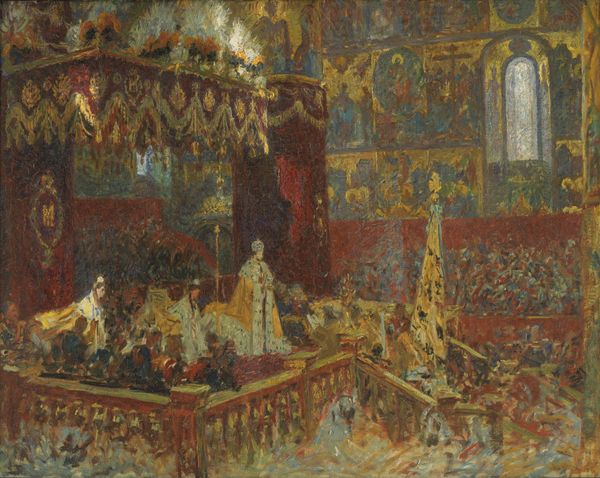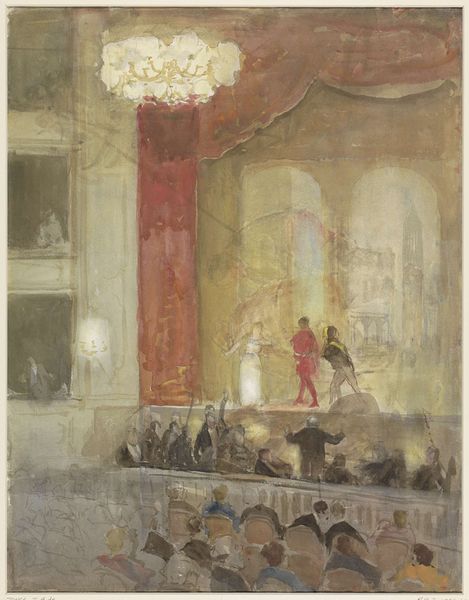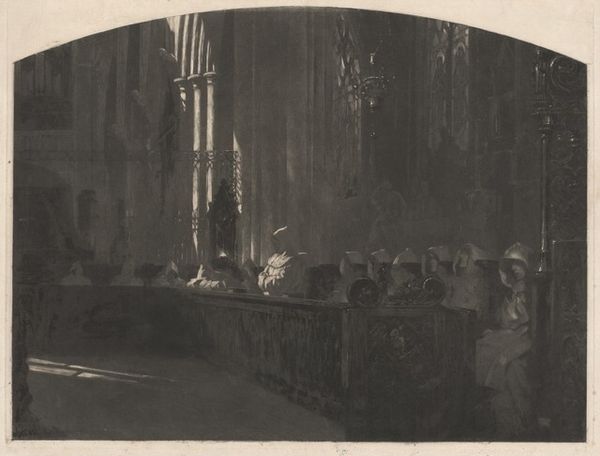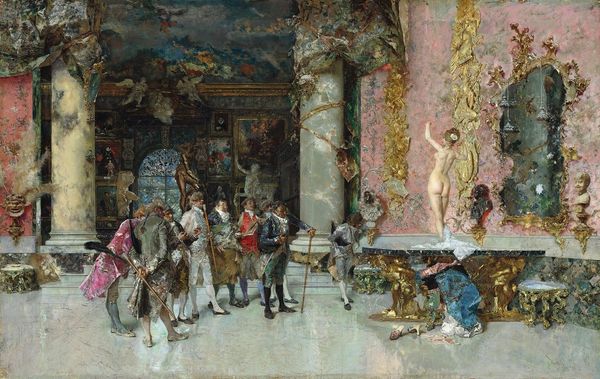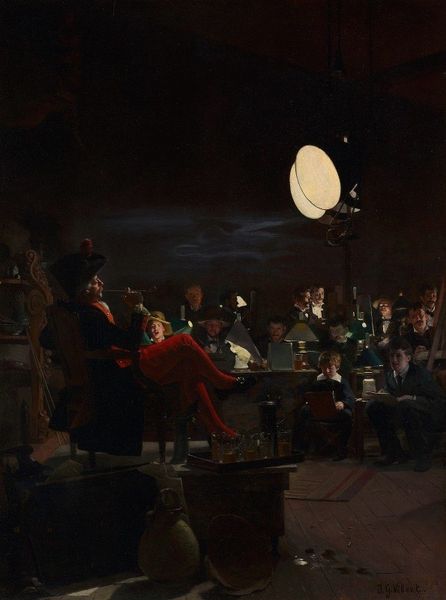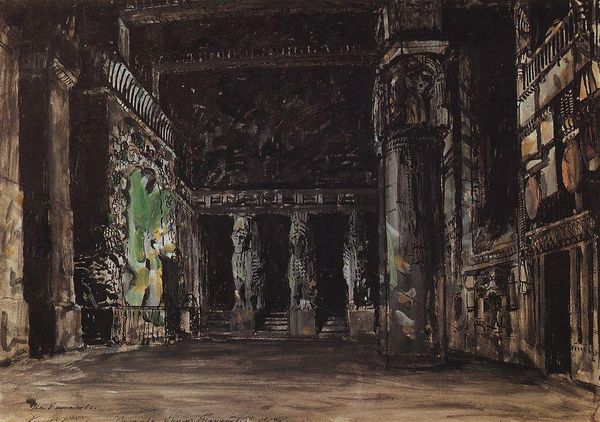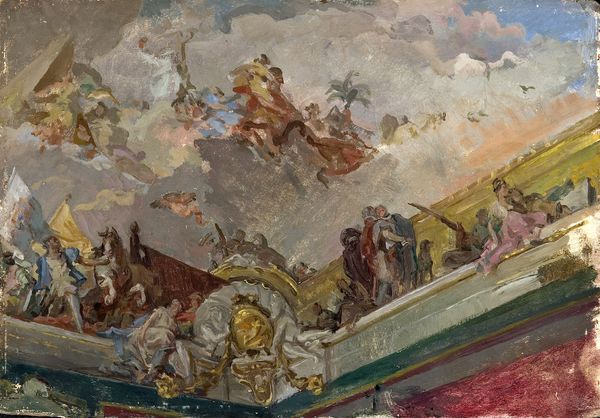
Copyright: Public domain
Curator: Here we have Adolph Menzel's "Théâtre du Gymnase in Paris," completed in 1856. It's currently housed here at the Staatliche Museen zu Berlin. Editor: It has such a hazy, dreamlike quality. The dramatic lighting really sculpts the space, drawing my eye to the figures both on and off stage. Curator: Absolutely. Menzel captures the theater, the players, the spectators; consider how his quick brushstrokes work, conjuring this atmosphere with oil on canvas, speaking to the rise of industrial pigments and their availability for rapid plein air sketches and studies intended as preparation for much larger and formal history paintings, which were highly subsidized by the Prussian state and later sought by private patrons. Editor: I'm interested in the painting's composition, particularly the contrasting light and shadow—the chiaroscuro effect. It is as though Menzel is interested in using perspective to define how light and space influence narrative interpretation, and it highlights his awareness of historical artistic themes, especially Italian Renaissance techniques. How do these decisions emphasize Romantic themes or historical narratives? Curator: Well, Romanticism favored emotional and subjective experiences. By capturing the ambience of the theatre – the thrill of performance, the anticipation – Menzel delivers us straight into the sensations of being there. As to your reference to narratives, it is crucial to see these impressions as documentation, especially when considering how instrumental paintings can be to historical narratives that speak to German industrial progress and development, as well as that of the modernizing Prussian kingdom, the rise of nationalism, or even cultural hegemony over France during and after the Franco-Prussian War, particularly because many wealthy manufacturers had interests invested in this space of cultural influence and intellectual progress. Editor: The visible brushwork is very evocative! It’s so impressionistic! It has its own intrinsic value which cannot be denied and that seems so different to many artists working at the time. The loose handling of the paint allows the audience to immerse themselves in a theater of light and atmosphere. Curator: Indeed, Menzel wasn’t just representing a theater. He was presenting a glimpse of 19th-century Parisian society, viewed, influenced, and changed by rapidly growing social, cultural, and industrial change! Editor: Menzel’s “Théâtre du Gymnase in Paris” provides so much in the way of rich sensory details and visual drama; hopefully our observations today, however distinct, have allowed each other to appreciate Menzel’s creative intent from several approaches. Curator: Hopefully visitors can consider these views of Menzel and think of that relationship to rapid change that makes paintings like this incredibly compelling and influential when seen in its contemporary context.
Comments
No comments
Be the first to comment and join the conversation on the ultimate creative platform.
